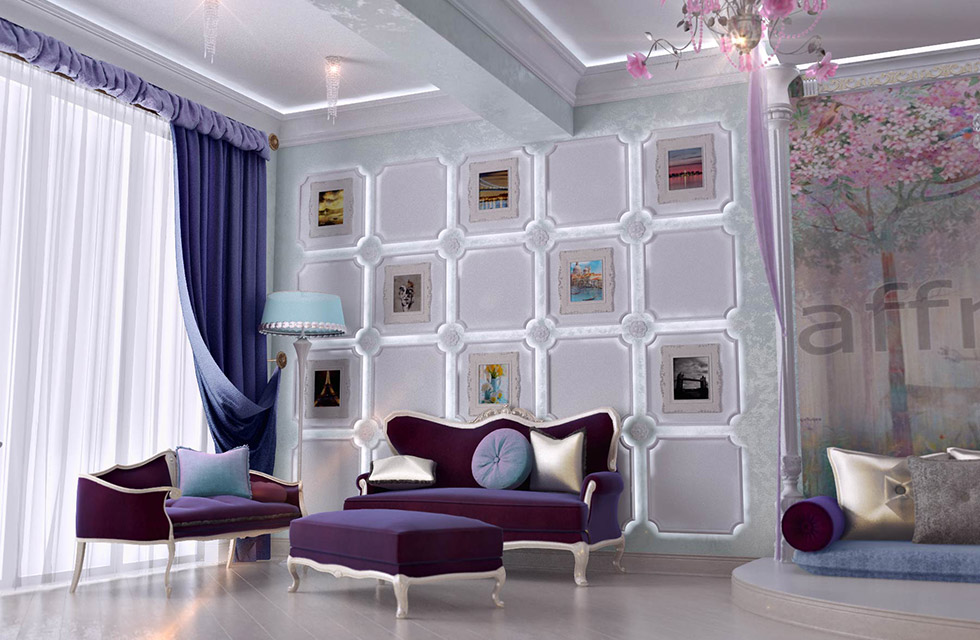Rooms with dark furniture and walls have a special energy: they are filled with comfort and sensuality, they look solid and luxurious. But dark interiors have two flaws: firstly, they seem less than they actually are, besides, they absorb light.
Accents with spotlights and lights
For large rooms, such as a kitchen-living room or a spacious studio, zoning with lighting will be relevant. Spotlights can emphasize different corners of the room: light up the dining table, create a comfortable area for relaxation, reading or crafts. Decorative lights will be a great solution if you want to focus on a particular subject of decor (for example, a picture on the wall or a collection in a shop window).
More light!
Crystal or glass chandeliers are not only a symbol of luxury, but also a great opportunity to increase the light. Reflected pendants, it is scattered around the room, creating the effect of bright lighting. Put a chandelier or sconce opposite the mirror, and the room will be twice as bright!
Lighting in a small room with low ceilings
A small room imposes restrictions on the choice of furniture and color scheme, but properly selected lighting can brighten up the shortcomings of small rooms. The first rule - give up the volumetric lamps and massive chandeliers. They are also unacceptable in a room with low ceilings, because they make them visually even lower. The ideal solution is a flat ceiling luminaire with upward directed shades: reflected light will optically lift the ceiling and push the walls apart.
Popular trend: LED lights
There are many possibilities for its use: built-in skirting, floor, and walls LED lamps, LED strips, furniture with built-in light sources and much more. Tip: use LED lighting in the hallway for easy movement in the dark or select a functional area in the living room, for example, highlight a bar or TV.
Local lighting for the work area in the study and in the kitchen
Sometimes even the highest quality and bright general lighting are not enough. Some areas require a directional light source, especially for a desk, a place for reading or a working area in the kitchen. A bright spotlight will make the work more comfortable for the eyes, while the lack of lighting can adversely affect the vision. Tip: Point light should be used in combination with background lighting for more comfortable work.
Choose a warm light for your home
If you want to feel cozy and comfortable at home, choose a lamp with a warm light: a little yellowish lighting is conducive to relaxation and rest, while the cold white light is more suitable for offices where you need to create a working environment.
